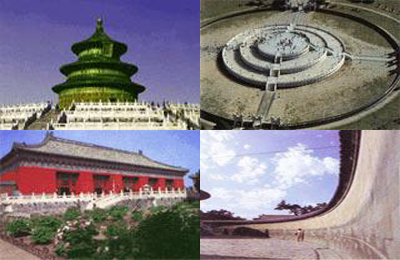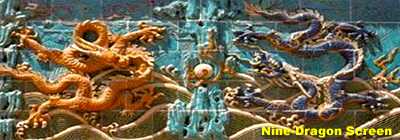 The Temple of Heaven
The Temple of Heaven
The Temple of Heaven, a place where the earthly ruler talks to the heavenly emperor.
About 2km southeast of the Forbidden City towers Tian Tan, or the Temple of Heaven, where dynastic rulers in China used to worship the heaven. The temple plus subsidiary buildings and a surrounding garden covers an area five times the size of the Forbidden City. As Chinese emperors called themselves Tianzi, or the son of heaven, they had to cede supremacy to the heaven in terms of abiding.
Chinese emperors had many other gods to worship apart from the god of heaven, including the gods of earth, water and war. They also worshipped their ancestors. As a result, religious activities were an important part of their busy work schedule. Temples of various kinds are scattered in Beijing. The best-known are the Temple of Heaven in the south, the Temple of Earth in the north, the Temple of Sun in the east, and the Temple of the Moon in the west. The Temple of Heaven is the grandest of them all.
1. Western Heavenly Gate
2. Danbi Bridge
3. Imperial Vault of Heaven, Glazed Tile Gate
4. Echo Wall, Nine-Dragon Cypress,
5. Circular Mount Altar, Heart of Heavenly Stone
6. Hall of Abstinence, Main Hall of the Palace of Abstinence, Left Parlor of the Main Hall, Sweet Spring Well
7. Hall of Prayer for Good Harvests
8. Gate of Prayer for Good Harvests
9. Double-Circle Longevity Pavilion
10. Eastern Gate
A Bird's View
The main buildings on a central axis (from top to bottom): Hall of Prayer for Good Harvest, Imperial Vault of Heaven and Circular Mound Altar.
Echo Wall
The circular wall surrounding the Imperial Vault of Heaven is 193.2 meters long, 3.7 meters high and 0.9 meter thick. If one speaks against the wall at one end, another can hear his voice at the other end of it.
Circular Mount Altar
Also known as Heaven Mound Altar, it is five meters high and of three tiers. Around each tier there are white marble balusters. During the Ming and Qing dynasties in early winter the emperor would come to this mound to pay homage to heaven and pray for peace and a good harvest.
Heart of Heavenly Stone
The stone placed in the center of the top tier of the Circular Mound Altar. Around it there are nine circles, each with nine stones, altogether 3,402 pieces. They are of identical size and appearance and put closely together. They have remained intact during the past several hundred years. When people stand on the Heart of Heavenly Stone and shout echoes will be heard.
Hall of Abstinence
The hall on a white marble foundation is of bricks without any pillar or beam. Bronze statues, a stone pavilion and a stone pavilion with a sundial are in front of the hall.
Left Parlor of the Main Hall of Abstinence
Displayed in this room are a set of jade chimes, musical bells and sacrificial objects used by the emperor for the ceremony.
Sweet Spring Well
The water from the well in the compound of the Divine Kitchen tastes sweet. It was used to make soup for the sacrificial ritual. Taoists in the Ming Dynasty said the well was connected with heaven. Emperor Zhu Houzong believed it and named the well "Heavenly Well".
Hall of Prayer for Good Harvest
Also known as Qigu Hall, it was the spot where the emperor of the Ming and Qing dynasties prayed for good harvest in spring. The umbrella-like structure of three tiers stands on a six-meter-high white marble circular terrace and is 32 meters high and 24.2 meters around at the base.
Double-Circle Longevity Pavilion
The pavilion was originally built in 1741 by Emperor Qian Long to celebrate his Mother's 50th birthday in the Imperial Palace. In 1977 it was relocated in a cypress grove on the western side of the hall of prayer for Good Harvest. It is a master piece of wooden structures from ancient times.
The observatory inside Jianguomen (Gate of National Reconstruction) was built in 1279. Of the 15 astronomical instruments originally kept there, seven were moved to the Zijinshan (Purple Gold Mountain) Observatory in Nanjing in 1931. The eight instruments remaining here were manufactured in the 17th and 18th centuries.
|

